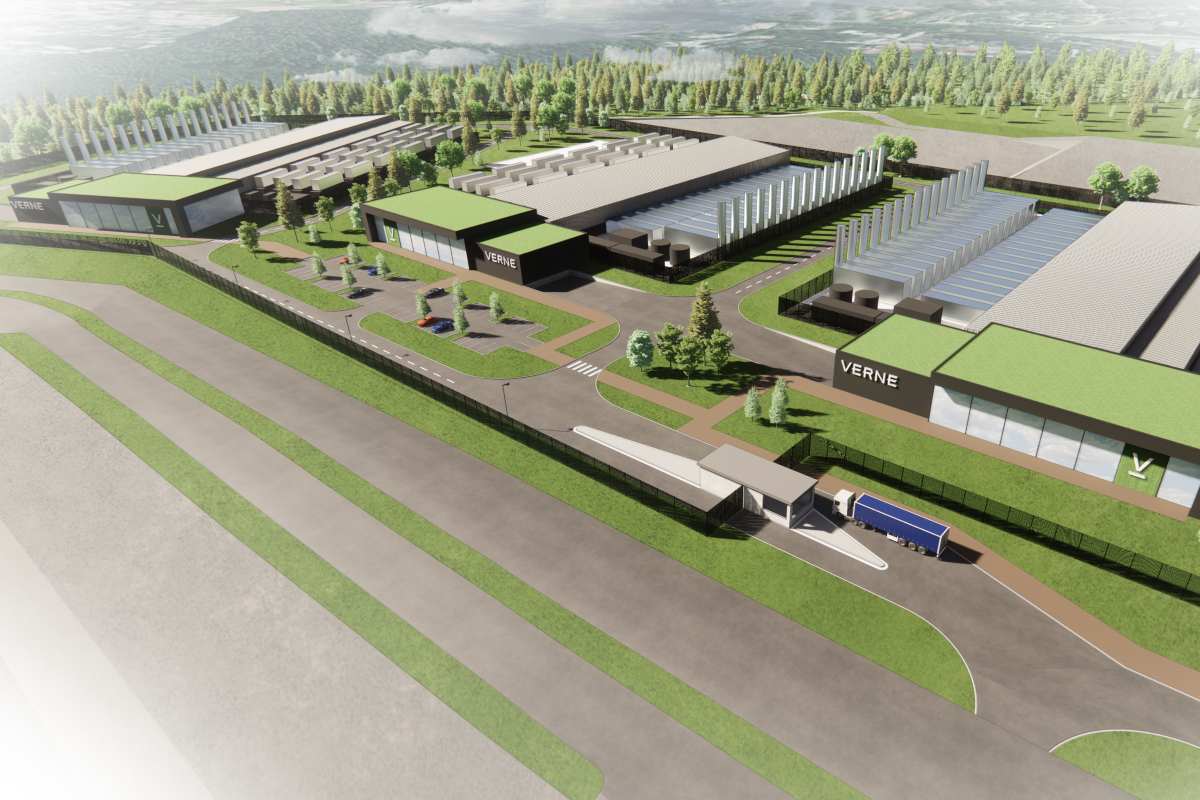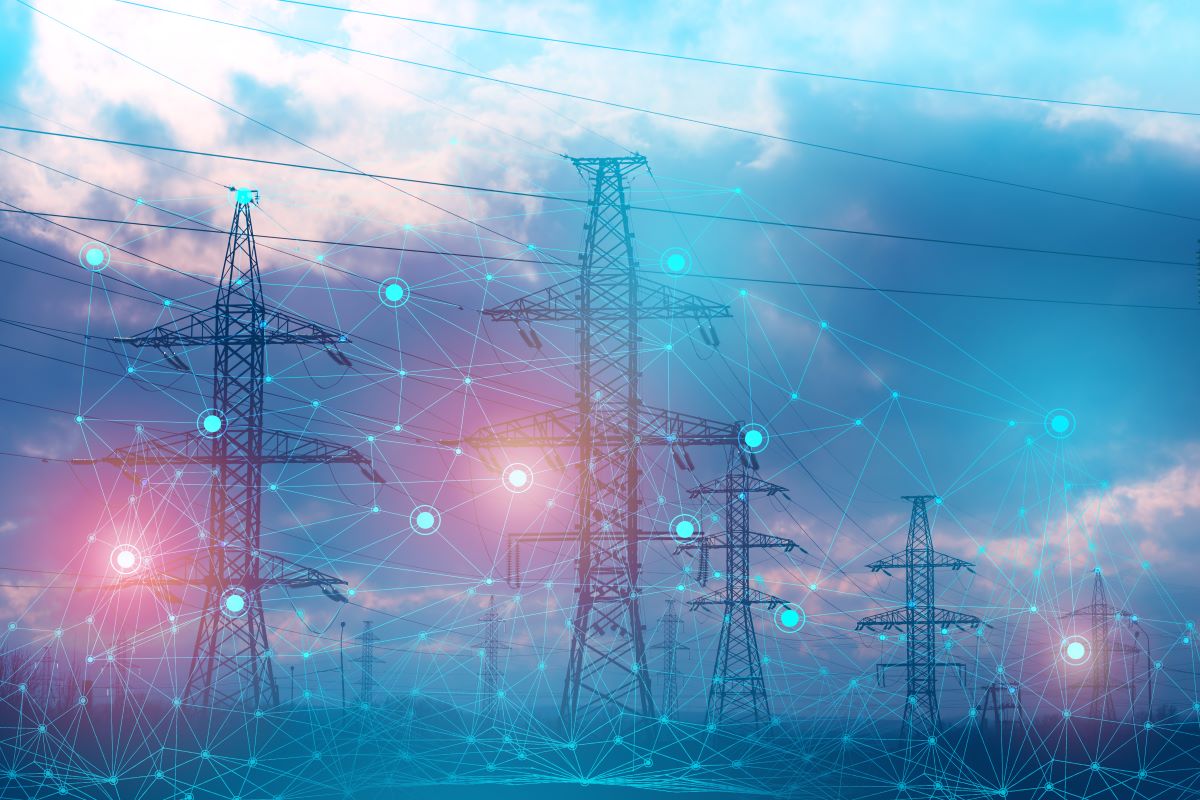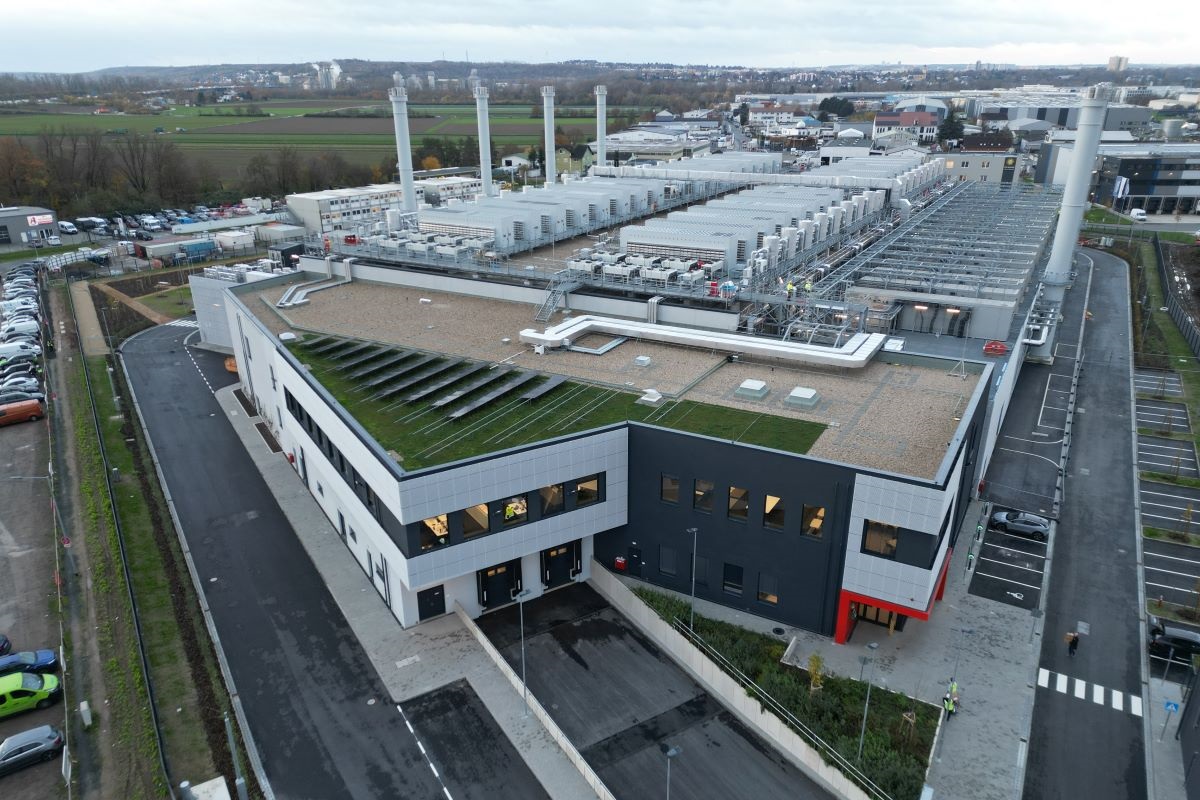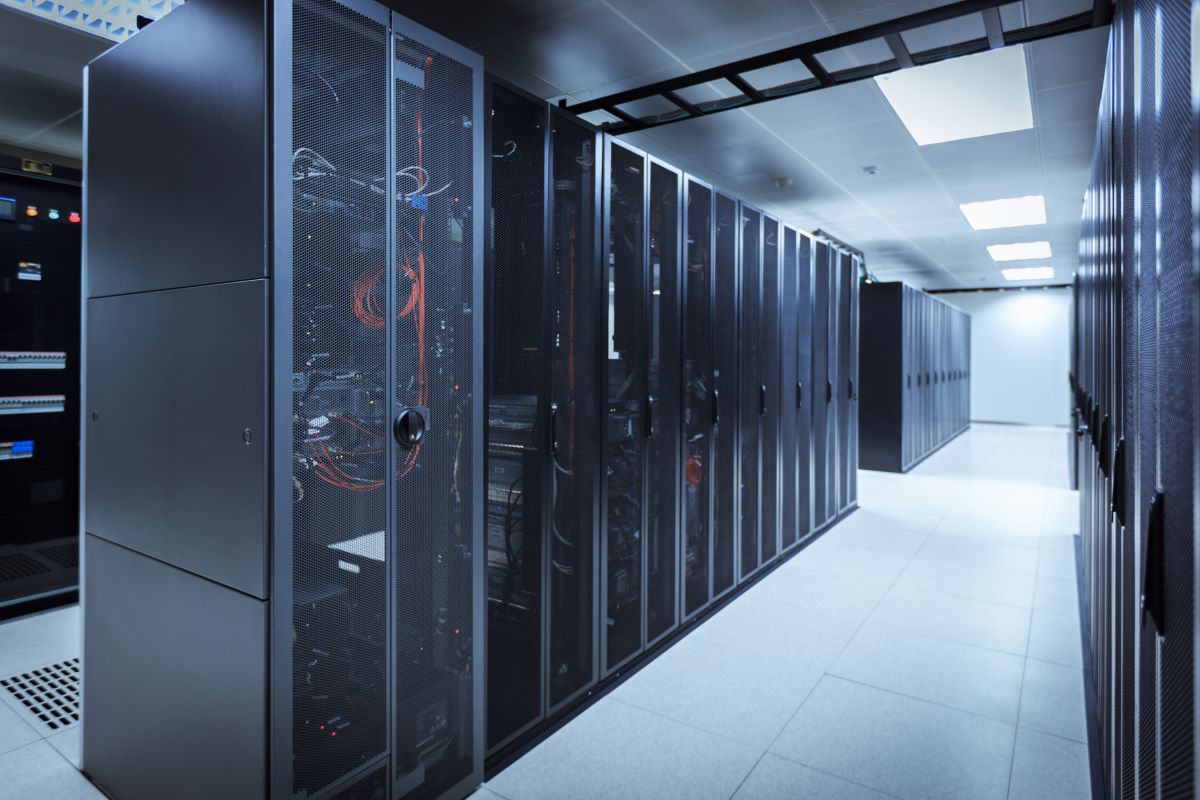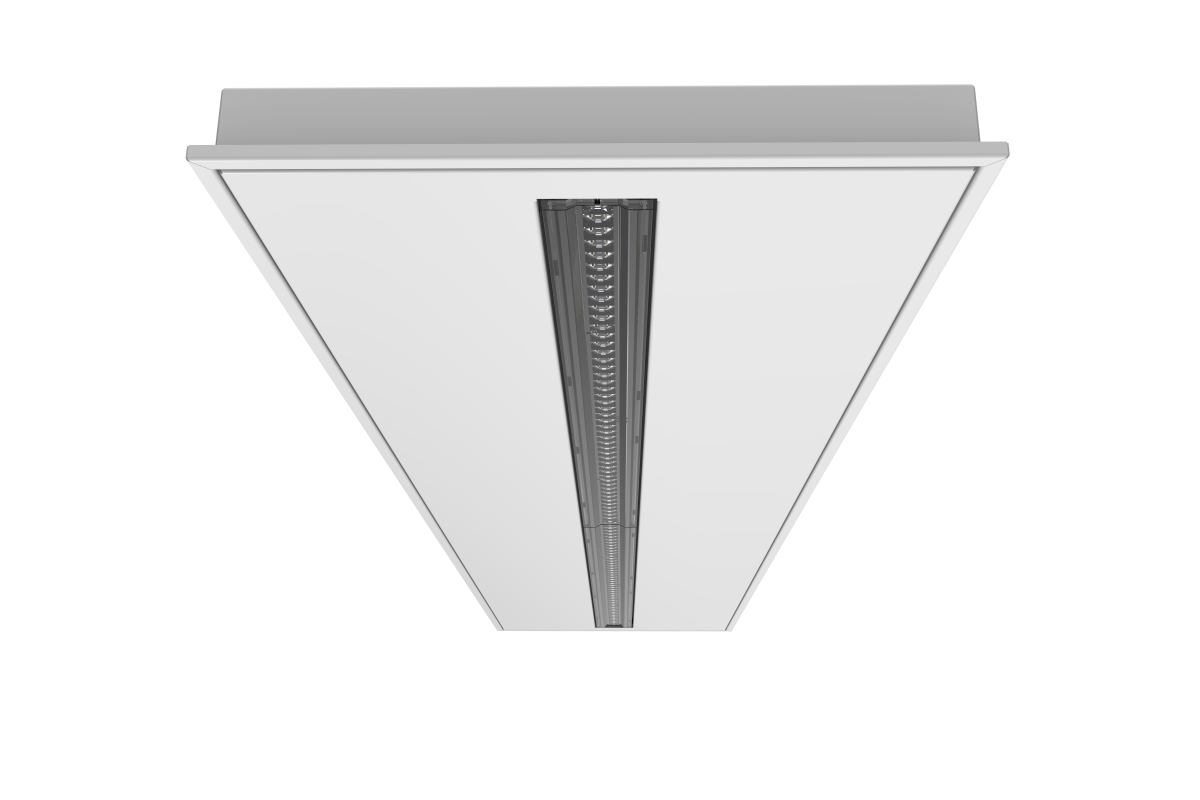Sustainable Infrastructure: Building Resilient, Low-Carbon Projects
Data Centres
News
Sustainable Infrastructure: Building Resilient, Low-Carbon Projects
Verne unveils plans for data centre campus in Finland
Verne, a provider of sustainably powered HPC data centres across the Nordics, has today announced it has acquired a strategic site in Mäntsälä, Finland, and unveiled plans to build its fifth Nordic data centre.
With an initial capacity of 70 MW, the Mäntsälä 10-hectare campus, a 40-minute drive from Helsinki-Vantaa International Airport, will support services to data intensive enterprises and AI innovators running High Performance Compute (HPC), machine learning, and other high intensity workloads, while operating exclusively on renewable energy.
The new facility will be built in line with Verne’s best practice design principles and expertise, which aim to maximise efficiency while helping customers reduce the environmental impact of their data centre operations. In addition, the new campus will be powered by 100% renewable energy sources, while waste heat generated by the data centre will be harnessed to power local community heating projects.
“Verne’s Mäntsälä data centre campus represents a significant step in our mission to help global enterprises embrace advanced computing while at the same time reducing their impact on the environment,” says Dominic Ward, CEO, Verne. “This new site is part of our strategy of continuous growth across the Nordic region and marks our first new location following Ardian’s acquisition of Verne.”
Dominic continues, “Finland, with its abundant clean energy, established data centre industry, and highly skilled workforce, offers the perfect environment for our latest development. We are also working in close collaboration with the Mäntsälä Municipality to ensure our latest facility benefits the local area. This includes a plan to harness the waste heat from the facility to supply hot water and heating to neighbouring districts.”
Mäntsälä's Mayor, Hannu Laurila, adds, "We are very pleased that Verne has chosen Mäntsälä as the location for its new data centre. This investment creates excellent opportunities for the broader development of the entire region. Mäntsälä is seen by companies as a highly attractive place to settle – one reason for this is, of course, the location, but also our basic infrastructure with reliable power grids is very good.”
Construction of Verne’s Mäntsälä data centre will commence in mid-2025 and is expected to take two years to complete. This expansion represents a strategic move in the company’s long-term plan to build out its sustainably powered data centre platform, which was acquired by private investment house, Ardian, in early 2024. Ardian is a long-term infrastructure investor committed to the Nordics market, where it has already invested more than €1.6 billion, with a focus on energy transition and digital infrastructure projects. It is working with Verne to drive sustainable growth across the Nordic countries, starting with this expansion plan in Finland.
Verne’s data centre platform currently includes three further facilities in Finland – in Helsinki, Pori, and Tampere, together with a substantial campus in Iceland, and a facility in Central London, which is optimised to support latency-sensitive applications. The Mäntsälä expansion marks another milestone in Verne’s mission to deliver sustainable data centre solutions for the rising demands of AI and HPC workloads.
For more from Verne, click here.
Simon Rowley - 17 December 2024
Enterprise Network Infrastructure: Design, Performance & Security
Hyperscale Data Centres: Scale, Speed & Strategy
News
Sustainable Infrastructure: Building Resilient, Low-Carbon Projects
Spirent selected for Ethernet infrastructure testing
Spirent Communications, a provider of test and assurance solutions for next-generation devices and networks, today announced that a leading AI-focused hyperscaler has selected Spirent to perform critical 800G Ethernet fabric testing and assurance, to ensure optimal performance for AI workloads. Spirent’s solution will enable the hyperscaler to balance efficiency and sustainability, while monetising its AI Ethernet infrastructure investments.
“Artificial intelligence is transforming the industry and this hyperscaler is leader in building the next generation public cloud for enabling large scale AI workloads,” says Aniket Khosla, Spirent’s Vice President of Wireline Product Management. “At Spirent we understand the challenges that come with building sustainable AI data centre networks and supporting high-performance compute use cases, and we’re excited to support leading industry players as they address the performance demands of advanced AI applications.”
Hyperscalers globally are continuing to scale rapidly to meet the dramatic demand for accelerated compute solutions critical for training and serving the most sophisticated AI models. Leveraging Spirent’s B3 800G Appliance and proven test methodologies, Spirent is enabling hyperscalers to optimise the performance of high-speed Ethernet infrastructure required to support AI-driven applications.
The B3 800G Appliance is a high-density native 800G OSFP and QSFP-DD test platform, and the first in its class to support IEEE 802.3df specifications. It provides rigorous, high-scale testing to evaluate bandwidth and resource utilisation, helping to accelerate 800G deployments and enable the networking industry to power new applications running AI/ML. With the B3 800G Appliance, hyperscalers can test and validate their infrastructure’s readiness for bandwidth-intensive AI workloads, while maintaining optimal network efficiency.
For more from Spirent, click here.
Simon Rowley - 10 December 2024
Artificial Intelligence in Data Centre Operations
Data Centre Operations: Optimising Infrastructure for Performance and Reliability
News
Sustainable Infrastructure: Building Resilient, Low-Carbon Projects
Research forecasts AI’s impact on energy consumption
Schneider Electric, an expert in the digital transformation of energy management and automation, has released two reports from its Sustainability Research Institute (SRI). These reports fill key knowledge gaps regarding AI’s impact on sustainability, particularly in energy use.
The first research, Artificial Intelligence and Electricity: A System Dynamics Approach, examines four possible scenarios for AI's electricity consumption over the next decade. Considering the growing concern around AI’s energy consumption, Rémi Paccou, Director of Schneider Electric’s Sustainability Research Institute, and Prof. Fons Wijnhoven, Associate Professor at the University of Twente (Netherlands), have built a system dynamics model that forecasts diverse scenarios for AI electricity demand, highlighting the path forward for sustainable AI development strategies and policies to mitigate environmental impacts.
The authors construct four scenarios of AI development and their associated impacts on electricity consumption. These scenarios, which are not predictions but rather tools to understand the complex factors shaping our future, span a range of possibilities: from Sustainable AI development to Limits to Growth, including more radical scenarios such as Abundance Without Boundaries and even the possibility of Energy Crises caused by AI. Alongside these forecasts and analysis, the report also contains recommendations for policymakers and decision-makers, contributing to a thoughtful and responsible approach to development, aiming for a path that balances progress with sustainability.
The second report, AI-Powered HVAC in Educational Buildings: A Net Digital Impact Use Case, also by Rémi Paccou and Gauthier Roussilhe, Research Fellow and Doctoral Student at RMIT, demonstrates how AI-powered heating, ventilation, and air-conditioning (HVAC) systems can enhance energy efficiency and environmental conservation in buildings. HVAC systems account for 35-65% of total building energy consumption. The study examined over 87 educational properties in Stockholm, Sweden, over an extended period under real-world conditions. Between 2019 and 2023, the study observed a total carbon emission reduction of 65tCO2e/y, roughly 60 times the actual embodied carbon footprint of the AI system deployed.
The research reveals opportunities for even greater carbon reductions in environments with more demanding heating, cooling, or air conditioning requirements. A comparative analysis between Stockholm and Boston showed that implementing the same solution in Boston could yield carbon emission savings seven times higher than in Stockholm.
The publishing of these reports coincides with the IEA's Global Conference on Energy & AI, where Schneider Electric was in attendance. This conference gathers experts from the energy and tech sectors, government, civil society, and academia to discuss the potential impacts of AI on global energy systems and the opportunities for leveraging AI for energy and climate goals. Schneider Electric’s CEO, Olivier Blum, and Executive Vice President of its Data Centres & Networks Business, Pankaj Sharma, participated in a high-level roundtable discussion.
Vincent Petit, Climate and Energy Transition Research SVP at Schneider Electric, notes, “The release of our reports comes at a crucial time, as the IEA conference highlights the transformative power of AI in the energy sector. As a company and as researchers, we are committed to keep shaping the future of energy and climate solutions.”
For more from Schneider Electric, click here.
Simon Rowley - 10 December 2024
Data Centres
News
Sustainable Infrastructure: Building Resilient, Low-Carbon Projects
Milestone for Yondr Group’s Frankfurt data centre
Yondr Group, a global developer, owner and operator of hyperscale data centres, has handed over the first 20MW of its 40MW project in Bischofsheim, just south of Frankfurt, Germany.
The milestone, achieved in just 20 months, represents the completion of the first two ready-for-service (RFS) phases in Yondr’s planned four-phase schedule for its Bischofsheim data centre. It is Yondr’s second successful handover in Europe this year, following RFS for the first building at the company’s 100MW+ London campus in July. The Bischofsheim facility is also part of Yondr’s rapidly growing global data centre portfolio, with projects currently on site in EMEA, APAC and North America.
Designed and constructed to industry-leading sustainability standards, the Bischofsheim data centre is aiming for LEED Gold certification. It will also comply with the German Energy Efficiency Act (EnEfG), which stipulates that data centres in Germany use renewable energy for 50% of the asset’s electricity consumption, rising to 100% renewables from 1 January 2027. To help align the data centre with Yondr’s sustainability goals and net carbon zero targets, the building has a solar PV installation on the roof, along with a green wall. The asset also has electric vehicle charging points.
The Bischofsheim project is strategically located in one of Europe’s most important data industry hubs, which Yondr says demonstrates the company's expertise in identifying, procuring and developing sites in the world’s most sought-after data centre locations. Part of the FLAP market, the Frankfurt data centre hub is central to meeting Germany’s data demand, alongside Berlin, Düsseldorf and Munich, and accounts for around 65% of Germany's upcoming data centre capacity.
The new 40MW Bischofsheim data centre being delivered by Yondr will help to meet growing demand for capacity in a location that is both Germany's financial capital and a major technology hub.
Peter Hill, VP Design & Construction EMEA at Yondr, comments, “Germany is a very dynamic market, with 1.2GW of capacity fully built, and a number of projects set to add to that capacity over the next couple of years, including our Bischofsheim facility.
“This data centre has been built to provide exceptional resilience, while also delivering on our client’s goals for sustainability and operational efficiency. Achieving our first RFS milestone in Frankfurt adds to a busy year for Yondr, with more on the horizon.”
Ailish McDonnell, Development Director, adds, “We are proud to contribute to Frankfurt’s reputation as a critical location in the FLAP market. This data centre reflects our desire to expand and invest further in the German market. Yondr is excited to continue partnering with local stakeholders to drive innovation and deliver cutting edge, sustainable data centres that meet the country’s evolving needs.”
For more from Yondr Group, click here.
Simon Rowley - 9 December 2024
Data Centres
Enterprise Network Infrastructure: Design, Performance & Security
Sustainable Infrastructure: Building Resilient, Low-Carbon Projects
AWS announces new data centre components
Amazon Web Services (AWS) has announced new data centre components designed to support the next generation of artificial intelligence innovation and customers’ evolving needs.
These capabilities combine innovations in power, cooling, and hardware design to create a more energy efficient data centre that will underpin further customer innovation. These new capabilities will be implemented globally in AWS’s new data centres, and many components are already deployed in its existing data centres.
“AWS continues to relentlessly innovate its infrastructure to build the most performant, resilient, secure, and sustainable cloud for customers worldwide,” says Prasad Kalyanaraman, Vice President of Infrastructure Services at AWS. “These data centre capabilities represent an important step forward with increased energy efficiency and flexible support for emerging workloads. But what is even more exciting is that they are designed to be modular, so that we are able to retrofit our existing infrastructure for liquid cooling and energy efficiency to power generative AI applications and lower our carbon footprint.”
AWS has been building large-scale data centres for 18 years and GPU-based servers for AI workloads for 13 years. Today, AWS’s data centres support millions of active customers worldwide, including hundreds of thousands of customers using AWS AI and machine learning services, and tens of thousands of global customers using Amazon Bedrock to build their generative AI applications. As use of generative AI continues to grow and GPU capacity demands increase, AWS data centres are adapting to support increasingly higher power densities.
Key improvements include:
1. Simplified electrical and mechanical design for high availability
AWS continuously focuses on offering customers the most reliable infrastructure. Simplified electrical and mechanical designs are more reliable and easier to maintain, ensuring that customers enjoy the benefits of high reliability that AWS has offered from the beginning.
AWS’s latest data centre design improvements include simplified electrical distribution and mechanical systems, which enable infrastructure availability of 99.9999%. The simplified systems also reduce the potential number of racks that can be impacted by electrical issues by 89%.
In a data centre, electricity goes through multiple conversion and distribution systems before reaching the IT equipment. Each step naturally introduces inefficiency, energy loss, and potential failure points. As one new design example, AWS simplified the electrical distribution and in doing so, reduced the number of potential failure points by 20%. Other examples of simplifications include bringing backup power closer to the rack and reducing the number of fans that are used to exhaust hot air. AWS is using the natural pressure differential to exhaust hot air, which improves the amount of electricity available for servers. All of these changes help reduce overall energy consumption while minimising the risk of failures.
2. Innovations in cooling, rack design, and control systems
AWS has built a number of new and enhanced capabilities to offer customers the most performant, highly available, and energy efficient infrastructure possible. New data centre innovations include:
Liquid cooling: Newer AI servers benefit from liquid cooling to more efficiently cool high density compute chips. AWS has developed novel mechanical cooling solutions providing configurable liquid-to-chip cooling in both its new and existing data centres. Some AWS technologies utilise network and storage infrastructure that does not require liquid cooling, so updated cooling systems will seamlessly integrate air and liquid cooling capabilities for the most powerful AI chipsets, like AWS Trainium2 and rack-scale AI supercomputing solutions like NVIDIA GB200 NVL72 - as well as AWS’s network switches and storage servers. This flexible, multimodal cooling design allows AWS to provide maximum performance and efficiency at the lowest cost, whether running traditional workloads or AI models. The unique liquid cooling rack design was developed in collaboration with leading chip manufacturers to accelerate time to market for AI workloads.
Support for high-density AI workloads: AWS is maximising how power is used by optimising how it positions racks in a data centre. This was achieved through software, powered by data and generative AI, that predicts the most efficient way to land servers. AWS will now reduce the amount of stranded power – energy that is available but unused or underutilised – and make more efficient use of the energy available.
This design will support the next generation of hardware and high-density racks required for AI workloads, but is flexible enough to accommodate a wide range of other hardware types. AWS infrastructure offers the broadest and deepest compute platform with more than 750 Amazon Elastic Cloud Compute (Amazon EC2) instances, giving customers the choice of the latest processor, storage, networking, operating system, and purchase model for any workload. In addition to the flexible multimodal cooling design, AWS has developed engineering innovations in its power delivery systems, which enable AWS to support a six-times increase in rack power density over the next two years, and another three-times increase in the future. This is delivered in part by a new power shelf, which efficiently delivers data centre power throughout the rack, reducing electrical conversion losses.
Taken together, these innovations enable AWS to deliver 12% more compute power per site for customer workloads. These changes will reduce the overall number of data centres needed to deliver the same amount of compute capacity.
Updated control systems: The rollout of an Amazon-owned control system across AWS’s electrical and mechanical devices provides the ability to standardise monitoring, alarming, and operational sequences. For example, AWS’s internally built telemetry tools use AWS technologies to provide real-time diagnostics and troubleshooting services, both of which enable AWS to maintain optimal operating conditions on behalf of customers. In addition, AWS has increased the redundancy in its controls systems, while reducing complexity. These benefits result in AWS designing for infrastructure availability of 99.9999%.
3. Increased energy efficiency and sustainability, including 46% reduction in mechanical energy consumption and 35% reduction in embodied carbon in the concrete used
For many years, AWS has been a pioneer in improving energy efficiency and sustainability across its infrastructure. Research estimates AWS’s infrastructure is currently up to 4.1 times more efficient than on-premises infrastructure, and when workloads are optimised on AWS, the associated carbon footprint can be reduced by up to 99%. In 2023, Amazon achieved its goal to match all of the electricity consumed by its operations with 100% renewable energy – seven years ahead of its 2030 goal.
AWS continuously reevaluates how its data centres operate and determines ways to help its infrastructure use energy more efficiently through ongoing innovation. The new components include the following upgrades for energy efficiency and sustainability:
• A more efficient cooling system that is expected to reduce mechanical energy consumption by up to 46% compared to its previous design during peak cooling conditions, without increasing water usage on a per-megawatt basis. Design changes include a new single-sided cooling system, reduction in cooling equipment, and introduction of liquid cooling capabilities.
• Reduction of embodied carbon in the concrete of the data centre building shell by up to 35%, compared to industry average. AWS is adopting specifications for lower-carbon steel and concrete, and optimising the structural design to use less steel overall.
• Backup generators will be able to run on renewable diesel, a biodegradable and non-toxic fuel that can reduce greenhouse gas emissions by up to 90% over the fuel’s lifecycle when compared to fossil diesel. AWS has already started transitioning to renewable diesel to power backup generators at existing data centres in Europe and in America.
For more from AWS, click here.
Simon Rowley - 3 December 2024
Data Centre Build News & Insights
Data Centres
News
Renewables and Energy: Infrastructure Builds Driving Sustainable Power
Sustainable Infrastructure: Building Resilient, Low-Carbon Projects
Keepit recognised for its green data centres
Keepit, a global provider of a comprehensive cloud backup and recovery platform, has been awarded 'Best Green Initiative' by the Business Awards UK, 2024 Corporate Sustainability Awards. Keepit’s data centres in the Americas and EMEA have been powered by 100% renewable energy since 2023.
"Keepit prides itself in having built its whole operation efficiently, with sustainability in mind. Providing our customers with the ability to secure their data on our platform, knowing we’re also doing our part to reduce environmental impact, is important to us as a company”, says Michele Hayes, CMO at Keepit.
Since 2023, all Keepit’s data centres in the Americas and EMEA have been powered by 100% renewable energy. Keepit reached this important green energy milestone ahead of other cloud-based backup vendors.
Keepit constructed its technology stack from the ground up, specifically designing it to efficiently address data storage challenges. This approach reflects a commitment to optimising resource utilisation and delivering a service that is not only effective but also resource efficient.
Keepit platform was also named Best Cybersecurity Backup Service by Business Awards UK, 2024 Cybersecurity and Resilience Awards.
Keepit is headquartered in Copenhagen, Denmark, with offices in the US, Germany, and the UK. Among its UK customers are The National Gallery and Oxford University Innovation.
For more from Keepit, click here.
Simon Rowley - 2 December 2024
Colocation Strategies for Scalable Data Centre Operations
Data Centre Operations: Optimising Infrastructure for Performance and Reliability
Data Centres
News
Sustainable Infrastructure: Building Resilient, Low-Carbon Projects
atNorth joins Danish Data Center Industry Association
atNorth, a Nordic colocation, high-performance computing, and artificial intelligence service provider, has announced that it is joining the Danish Data Center Association (DDI) as part of its continued investment into the country’s data centre industry.
The business recently announced the development of its second site in Denmark, DEN02 and its first site, DEN01, is due to be operational by Q2 2025. atNorth has also recently announced the appointment of Jeff Kjeldsen as Operations Director for Denmark as it aims to deliver large-scale infrastructure operations that demonstrate leading technologies and adhere to stringent industry standards.
The DDI aims to create stakeholder opportunities by promoting sustainability, best practice operations and cross sector collaborations. These are factors that are a core part of atNorth’s business ethos, and the business is proud to help shape a thriving future for the country.
“The Danish Data Center Industry is expanding rapidly, but it is important that we evolve in a sustainable way”, says Henrik Hansen, CEO at the Danish Data Center Industry. “We welcome Nordic data centre leader, atNorth, as a member of our organisation and hope we can capitalise on a shared ethos of technical excellence and environmental protection”.
“We are proud to join the Danish Data Center Industry Association”, adds Jeff Kjeldsen, Operations Director for Denmark at aNorth. “Denmark, alongside its Nordic neighbours, boasts ideal conditions for data centre development. The country’s beneficial climate, excellent connectivity and an abundance of renewable energy has fuelled the rapid expansion of the industry, and we are delighted to help guide the process to ensure sustainability and best practice excellence”.
For more from atNorth, click here.
Simon Rowley - 27 November 2024
Data Centres
News
Sustainable Infrastructure: Building Resilient, Low-Carbon Projects
Digital Realty data centre becomes home to SuperComputer
Sesterce, a company helping to shape the future of artificial intelligence with high-performance GPU SuperComputers, today announced the launch of a new SuperComputer featuring NVIDIA H100 Tensor Core GPUs hosted in Digital Realty's data centre in Marseille, France.
The state-of-the-art SuperComputer helps to tackle the growing demand for powerful cloud GPU solutions and offers a decarbonised AI as service to Sesterce’s customers.
The cluster is equipped with NVIDIA H100 Tensor Core GPUs interconnected through InfiniBand technology. These cards provide excellent scalability and performance, contributing to optimal energy efficiency for AI. With this SuperComputer, Sesterce empowers clients to develop highly scalable AI projects with optimal performance and sustainability, providing flexibility for AI projects of any size.The use of AI has been democratised, resulting in demand for storage capacity and computing power continuing to rise. In 2023, France had over 600 start-ups dedicated to AI in the country - a 24% increase since 2021 - and this trend is expected to continue in the coming years. However, this exceptional growth parallels a significant rise in energy consumption, raising environmental concerns.
Youssef El Manssouri, CEO of Sesterce, comments, "Actors in the field have a role to play. Those that share the same values should work together to offer more environmentally responsible computing power."
This breakthrough was made possible through collective efforts. The cluster will benefit directly from Digital Realty's ongoing programme dedicated to minimising the environmental impact of its data centres. These actions include enhancing energy efficiency and procuring renewable energy with a strong focus on locally sourced renewables, ensuring that its entire European portfolio continues to be matched with 100% renewable energy.
Additionally, Digital Realty is committed to achieving carbon neutrality across its European data centre portfolio by 2030, alongside a 68% reduction in Scope 1 and 2 emissions globally (against a 2018 baseline), and a 24% reduction in Scope 3 emissions globally within the same timeframe.
Youssef adds, "This cluster relies on the synergy of skills, with each party bringing the best of their expertise to create and offer an intensive-ready cluster."
This cluster marks a turning point in the field, the companies believe, demonstrating a successful marriage between technical innovation and sustainability.
For more from Digital Realty, click here.
Simon Rowley - 26 November 2024
Cooling
Data Centres
News
Sustainable Infrastructure: Building Resilient, Low-Carbon Projects
Lennox launches new business to support data centre industry
Lennox, a provider of energy-efficient climate control solutions, is launching a new business to address the specific cooling challenges of the data centre industry. Lennox Data Centre Solutions is a standalone business that will provide innovative, sustainable cooling solutions and services directly to the data centre market across Europe, the Middle East and Africa.
The global data centre market looks set to grow at around 9.1% CAGR through to 2030. In Europe alone, market studies estimate the current data centre capacity at 12,23GW, expanding at a rate of 600-700 facilities a year.
The heat generated by these new data centres will require efficient and effective processing, be that through heat rejection, heat reuse or a combination of the two. Today’s demanding energy and performance standards require heat rejection products that offer precision, efficiency and reliability.A natural extension of its existing expertise, Lennox Data Centre Solutions intends to bring Lennox's high level of product and service excellence to customers in the data centre market.
“Our experience has led us to a position where we understand that data centre solutions, especially for cooling processes, are bespoke from project to project,” says Matt Evans, CEO of Lennox Data Centre Solutions. “Backed by renewed investment and focus, the business will lead with an engineering consultancy approach to the design of data centre heat-rejection solutions. We aim to treat every project on individual merit, working closely with customers to create the optimal solution based on our full end-to-end product suite.”
Lennox Data Centre Solutions has deep knowledge in data centre design and build excellence. This arrives courtesy of its existing experience in this sector as part of Lennox, bolstered by a number of strategic new recruits with proven expertise in data centre cooling solutions.
The ability to tap into the comprehensive resources of Lennox EMEA is significant. With manufacturing facilities in Lyon and Dijon in France, Burgos in Spain, and fully certified Eurovent test facilities to match, each plant features advanced production capabilities staffed by highly skilled professionals to ensure quality and reliability.
Lennox Data Centre Solutions is offering a full portfolio of cooling solutions for data centres. Adapting some products from the existing Lennox portfolio, others have been designed and manufactured from the ground up. The range spans close control units (CCU’s), computer room air handler (CRAH) units, fan wall units (FWU), cooling distribution units (CDUs), chillers, and both adiabatic and conventional dry coolers.With the new business, Lennox can call upon a team of over 100 in-house technical engineers supporting product commissioning, service and maintenance across Europe alone. With the largest team of its type in the region, data centres can expect seamless integration, installation and support for their bespoke projects.
Ultimately, the goal is to become the preferred partner for enterprise, colocation and hyperscale data centre operators seeking efficient, effective and sustainable data centre cooling solutions. This ambition aligns with Lennox’s long-standing commitment to pushing the boundaries of innovation and efficiency.
Lennox Data Centre Solutions is backing its expectations for rapid growth with an aggressive recruitment campaign that will further build the EMEA team over coming months. Alongside its direct support for data centres, the new business will also look to provide support through an exclusive partner network of consultants and system integrators.
Simon Rowley - 13 November 2024
Data Centres
News
Sustainable Infrastructure: Building Resilient, Low-Carbon Projects
NVC Lighting to launch new products at DataCentres Ireland
Visitors to this year’s DataCentres Ireland exhibition can learn how NVC Lighting’s new products, designed specifically for the sector, can contribute to increased energy efficiency and cost savings.
The ‘around the clock’ operational nature of data centres means that dependable lighting has long been a crucial component in allowing for optimum performance. Now, with the global focus on sustainability and energy saving, NVC Lighting will be launching its BROADWAY range, which utilises LED lighting technology to offer data centre buildings a more efficient solution than ever before, to the European market.
Visitors to the two-day exhibition and conference, being held from 20-21 November at the RDS in Dublin, can speak with the NVC Lighting team at Stand 237, who will be showcasing the new BROADWAY products and a range of regular fittings, as well as examples of its work to support data centres.
High-quality lighting enhances visibility, reduces the risk of accidents, and supports efficient maintenance operations. The BROADWAY range is specifically designed to offer energy-efficient, low-glare solutions that ensure a safe and productive data centre environment.
The NVC Lighting team, which supports clients in a range of sectors across the UK, have focused on optimising its high performance, energy efficient products to contribute to the need for Power Usage Effectiveness (PUE) reduction.
Phil Brown, Product & Marketing Director at NVC Lighting, says, “We’re excited to launch the optimised BROADWAY range at DataCentres Ireland – these are products which can have a major impact on energy efficiency across the sector, with a relatively low outlay compared to major investments elsewhere.
“Working with an efficient and effective LED lighting can lead to significant cost savings in a shorter period of time – over the longer term, their lifespan ensures that it’s an investment which stands the test of time.
“This investment not only reduces operating costs but also contributes to a more sustainable and environmentally friendly data centre.”
For more from DataCentres Ireland, click here.
Simon Rowley - 7 November 2024

Head office & Accounts:
Suite 14, 6-8 Revenge Road, Lordswood
Kent ME5 8UD
T: +44 (0)1634 673163
F: +44 (0)1634 673173
